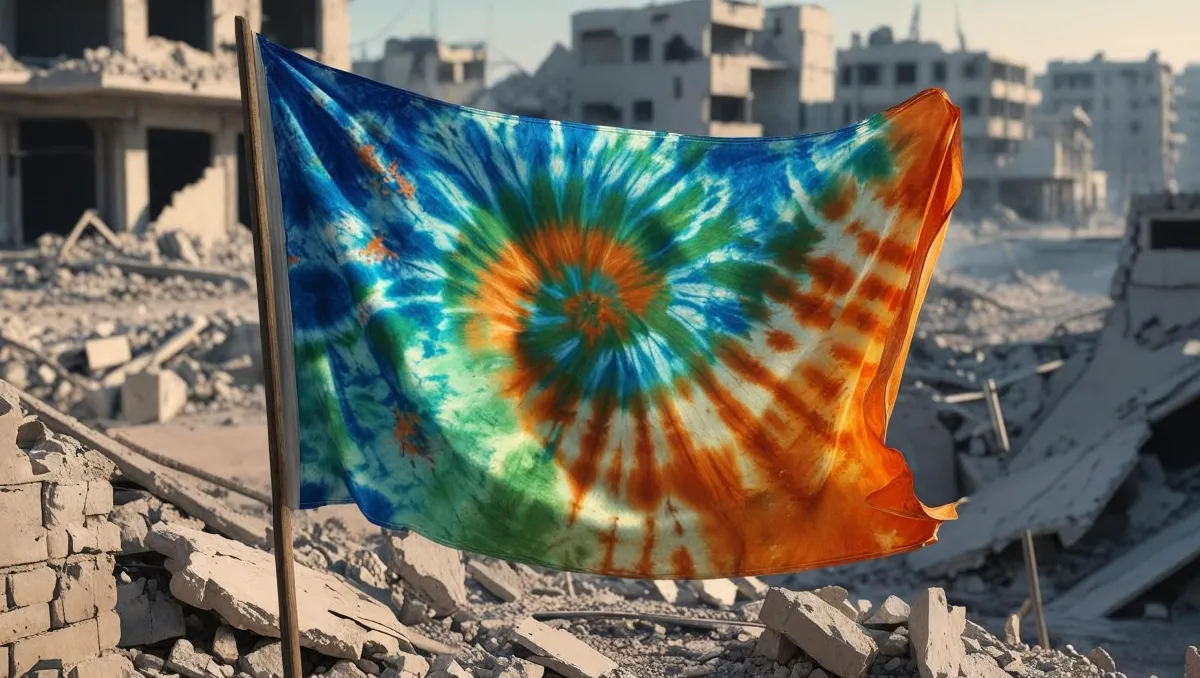
Tie Dye as a revolutionary act.
Governments Actually Banned This Ancient Art Form

Four thousand years of rebellion live in every tie-dye shirt.
What seems like a 1960s hippie invention actually represents humanity's oldest form of textile resistance. The oldest known tie-dye, called bandhani, emerged in 4,000 B.C. within the Indus Valley Civilization.
The technique appeared fully formed. No experimental phase, no gradual development.
Ancient artisans had already perfected what we consider modern counterculture.
When Governments Fear Fabric
China embraced tie-dye by the 5th Century AD. Then something remarkable happened.
The Song dynasty banned it entirely between 960-1279 AD. Too extravagant. Too individualistic. Too threatening to social order.
A government actually outlawed colorful cloth patterns.
This reveals tie-dye's true power. Political authorities recognized what modern observers often miss: creative expression threatens conformity. Individual artistry challenges mass control.
The ban failed. Tie-dye survived underground, waiting for its next cultural moment.
The Haight-Ashbury Revolution
San Francisco's counterculture movement didn't invent tie-dye. They rediscovered ancient rebellion.
Haight-Ashbury artists transformed the technique into spiritual practice. The Grateful Dead community created psychedelic mandalas "in a Zen, meditative state, focusing on Universal Source."
Peter Benchley captured the appeal in 1970: "At a time when individualism is at a premium, tie-dye means instant identity: It is virtually impossible to duplicate a tie-dye pattern."
Each shirt became a unique fingerprint. Mass production met its creative opposite.
The hippies understood what Chinese emperors feared. Tie-dye represents something deeper than fashion. It embodies individual expression in a conformist world.
The Psychology of Colorful Rebellion
Modern research reveals why tie-dye endures across millennia.
The craft provides "powerful, emotional charge from engaging with fabric and color that soothes us and restores us." Physical creation offers therapeutic benefits that digital experiences cannot match.
This explains tie-dye's cyclical returns during cultural stress.
Google searches for tie-dye exploded during COVID-19 lockdowns, peaking in June 2020 higher than any point in five years. People sought creative control when external control vanished.
The pandemic wasn't unique. Tie-dye resurges during every period of political turmoil.
Ancient technique meets modern therapy.
The Enduring Appeal of Imperfection
Tie-dye survives because it celebrates what machines cannot replicate.
Perfect uniformity defines industrial production. Tie-dye embraces beautiful accidents. Each fold creates unpredictable results. Every application produces unrepeatable patterns.
This represents profound cultural resistance.
In an age of algorithmic precision, tie-dye offers human unpredictability. Against corporate branding, it provides personal identity. Where mass media demands passive consumption, tie-dye requires active creation.
The technique connects modern practitioners to ancient artisans through shared creative process.
Why Rebellion Never Fades
Tie-dye transcends fashion because it addresses fundamental human needs.
Self-expression. Creative control. Individual identity. Resistance to conformity.
These drives existed in ancient China. They motivated 1960s counterculture. They resurge during every cultural crisis.
Governments can ban techniques. Markets can commercialize symbols. But the underlying human impulse toward creative rebellion remains constant.
Four thousand years later, people still bind fabric and apply color to create something uniquely their own.
Ancient craft. Modern rebellion. Timeless human expression.
The next time you see tie-dye, remember: you're witnessing humanity's longest-running creative resistance movement.